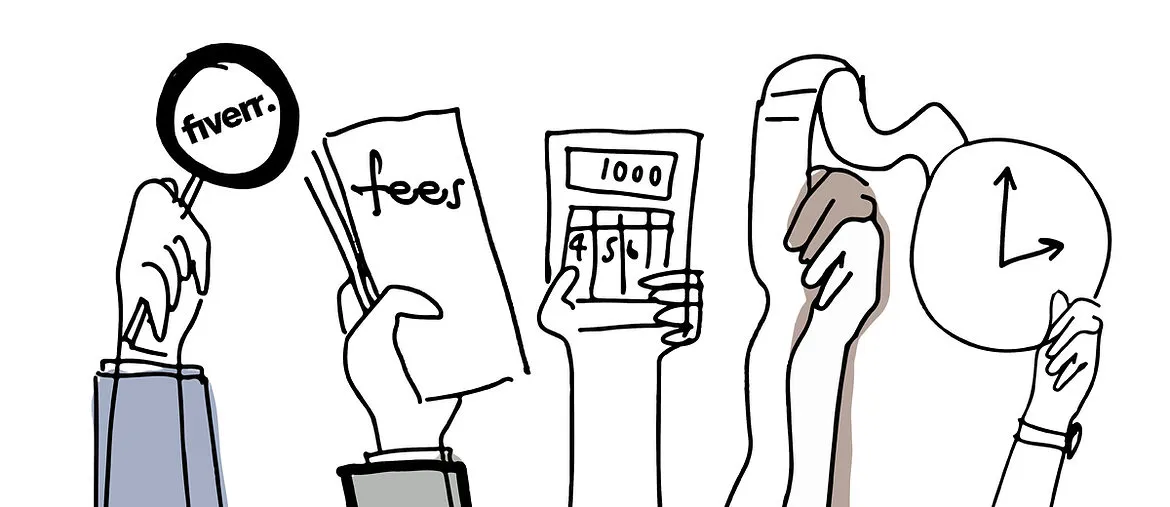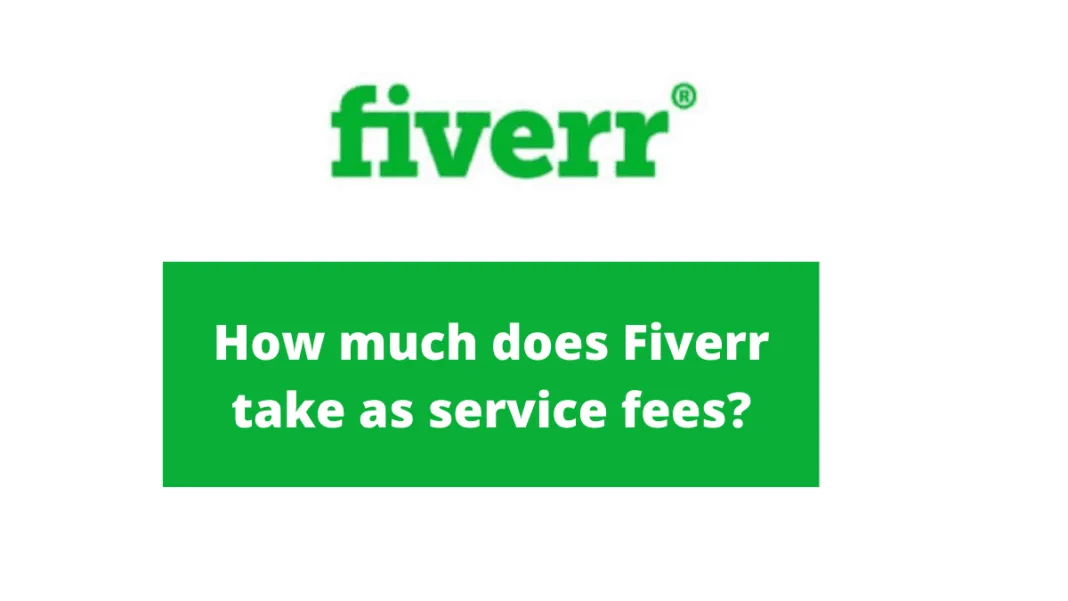When you're diving into the world of freelance services, Fiverr often pops up as a go-to platform. It connects buyers and sellers, allowing you to showcase your skills or hire someone to complete a task for you. But if you've ever wondered about the costs associated with using Fiverr, you're not alone. Understanding Fiverr's fee structure is essential to ensure you're making the most out of your experience, whether you're a seller or a buyer. Let's delve deeper into this topic, starting with an overview of how Fiverr operates.
Overview of Fiverr's Business Model

Fiverr operates on a marketplace model that primarily focuses on connecting freelancers with clients seeking various services. Here's a deeper look into how this works:
- Service Listings: Freelancers create profiles and list their services, known as "gigs," starting at just $5. Each gig includes a description, pricing, and any add-ons the freelancer offers.
- Buyers: Clients browse through the gigs available on the platform, filtering by category, price, or ratings. This accessibility attracts a diverse clientele, ranging from businesses needing graphic design to authors looking for proofreading.
- Transactions: When a buyer selects a gig, they proceed to purchase it. Fiverr facilitates this transaction, ensuring safe payments and offering some protection to both parties.
Now, let’s break down the financial aspect:
| Element | Details |
|---|---|
| Seller Fee | Freelancers typically pay a commission fee of 20% on each sale, which means they keep 80% of their earnings. |
| Buyer Fee | Buyers are charged a service fee on top of the gig price, which may vary based on the total amount spent. |
This structure allows Fiverr to offer a user-friendly experience while also providing a revenue stream for the platform itself. As you dive deeper into Fiverr's offerings, understanding these elements will help ensure that both buyers and sellers navigate the platform with clarity and confidence.
Also Read This: How to Become a Freelance Python Programmer
Breakdown of Fiverr's Fees

When you're considering using Fiverr as a freelancer or buyer, understanding the fee structure is essential to maximizing your experience. Fiverr's fees can be broken down into a few key components that affect both sellers and buyers.
For Sellers:
- Service Fee: Fiverr takes a 20% cut of the total sale price. This means if you set your gig at $100, you’ll receive $80 after Fiverr takes its percentage. It’s important to factor this in when pricing your services.
- Withdrawal Fee: Depending on your chosen payment method, there may be additional withdrawal fees. For example, withdrawing to PayPal might cost you a small fee, which varies based on the transaction.
- Currency Conversion Fees: If your earnings need to be converted into a different currency for withdrawal, Fiverr typically charges a conversion fee as well.
For Buyers:
- Service Fee: Buyers also have to pay a service fee, which is generally 5% of the total purchase amount but can range from $2 to $5 for smaller gigs. This fee is applied during checkout.
- Tips: If buyers choose to tip a seller through the platform, a 20% fee also applies to those tips.
Understanding this breakdown helps you set realistic expectations, whether you're selling or buying services. It's good to know the full scope of costs associated with using Fiverr so that you can navigate the platform confidently!
Also Read This: Is Fiverr a Profitable Company?
Impact of Fiverr's Fees on Earnings
Fiverr’s fee structure plays a significant role in shaping the earning potential for freelancers. Here's how these fees can impact your bottom line:
- Reduced Take-Home Pay: The 20% commission fee means freelancers need to price their services higher to maintain income levels. For example, a seller who wants to earn $100 after fees should list their gig at $125.
- Competitive Pricing: Since all freelancers on the platform deal with the same fee structure, many opt to lower their prices to attract buyers. This can make it harder to stand out without sacrificing earnings.
- Gig Performance: If you’re new to Fiverr, you might feel the pinch even more, as you're likely to price your gigs competitively to build up reviews and visibility. This could mean lower initial earnings until you establish a name for yourself.
- Long-Term Earnings: Over time, as you gain more clients and earn positive feedback, you may increase your prices. However, you need to continuously factor in these fees to ensure that your earnings align with your living expenses.
Ultimately, being aware of Fiverr's fees empowers freelancers to make informed decisions about pricing and service offerings. By calculating earnings after fees, sellers can better strategize how to engage with buyers while ensuring that their financial health remains robust.
Also Read This: How to Use Fiverr for YouTube: A Comprehensive Guide
Comparing Fiverr's Fees with Other Freelance Platforms
When it comes to choosing a freelance platform, understanding the fee structure is crucial. Fiverr, with its unique approach to gig-based work, has specific fees that vary from other platforms. Let's break it down:
- Fiverr: Fiverr takes a standard 20% commission from the seller's earnings on every transaction. This means if you sell a service for $100, you’ll receive $80.
- Upwork: Upwork has a tiered fee structure. For the first $500 billed with a client, the fee is 20%. After that, it drops to 10% for earnings between $500.01 to $10,000, and then to 5% for anything over $10,000.
- Freelancer: Freelancer.com charges 10% for fixed-price projects or a $5 fee—whichever is greater. They also charge a similar 10% for hourly projects.
- PeoplePerHour: This platform takes a commission of 20% for the first £500 you earn, which reduces to 7.5% for earnings beyond that threshold.
These comparisons show that while Fiverr's rate might seem steep, especially if you're just starting, it offers a straightforward fee structure. Frequent users may find platforms like Upwork more cost-effective as they build long-term relationships with clients.
Ultimately, your choice should align with your business model, pricing strategy, and how much you value the platform's user interface, support, and potential clientele.
Also Read This: How Many People Actually Use Fiverr? Insights from Reddit in 2019
Strategies for Maximizing Earnings on Fiverr
Maximizing your earnings on Fiverr isn't just about setting the right prices; it's about strategic planning, effective communication, and constant optimization of your gigs. Here are some actionable strategies to get you started:
- Optimize Your Gig Title and Description: Use relevant keywords that your target audience is likely to search for. A clear and catchy title can draw potential clients in.
- Utilize High-Quality Images and Videos: Clients are more likely to engage with visually appealing content. Showcase your work through professional images or even a promotional video.
- Offer Packages: Create different tiers of service. For example, you might have a basic, standard, and premium package that cater to various budgets and needs.
- Encourage Reviews: After completing a gig, politely ask your clients for feedback. Positive reviews can enhance your credibility and attract more buyers.
- Be Responsive: Quick responses to inquiries can set you apart. Being accessible not only helps build trust but can also lead to more sales.
- Promote Your Gigs Outside Fiverr: Share your Fiverr link on social media platforms, relevant online communities, or even your personal website to drive more traffic to your gigs.
These strategies, when implemented effectively, can significantly increase not just your visibility but also your overall earnings on Fiverr. Remember, the key is to continually assess and refine your approach based on what works best for you!
What Cut Does Fiverr Take? Understanding Fiverr's Fee Structure
Fiverr has transformed the way freelancers and clients interact, offering a platform where services can be easily marketed and purchased. Understanding Fiverr’s fee structure is crucial for both sellers and buyers to make informed decisions. Knowing how much Fiverr takes from a transaction ensures sellers can appropriately price their services and buyers understand the costs involved.
Fiverr's fees can be broken down as follows:
| Type of User | Fiverr Fee Structure |
|---|---|
| Sellers (Freelancers) | Fiverr takes a 20% commission on the total earnings from each order. For example, if a seller charges $100 for a service, they receive $80 after Fiverr's cut. |
| Buyers (Clients) | Buyers are charged a service fee that is a percentage based on the order total, typically ranging from $2 to $5, depending on the total cost of the service. |
Additionally, it’s important to consider the additional costs that may incur for optional services such as:
- Extra fast delivery
- Additional revisions
- Upgraded service packages
Understanding these fees helps both buyers and sellers navigate Fiverr successfully and avoid any surprises during transactions. This transparency enables freelancers to set competitive prices while ensuring that clients are aware of the total cost before committing.
Conclusion: In conclusion, Fiverr's fee structure, including the 20% commission on earnings for sellers and the additional service fees for buyers, is pivotal to understanding the overall financial dynamics of the platform, thus allowing both parties to plan accordingly.



